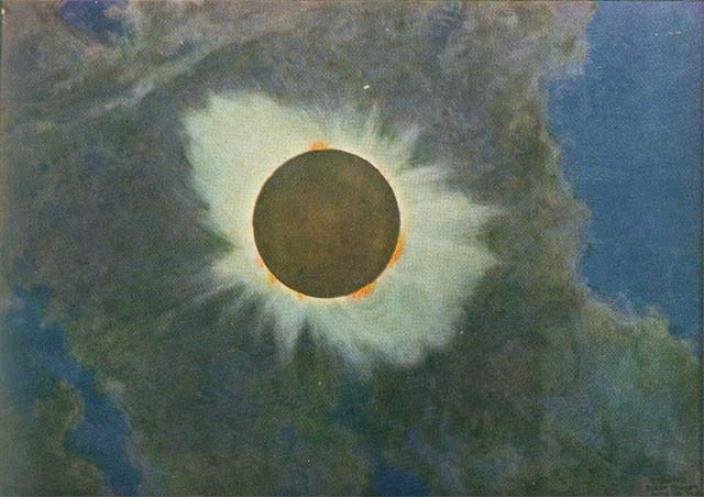Capturing a solar eclipse in paint
jmp.press@gmail.com
A friend and I were reminiscing the other day about the big solar eclipse of 2017. Remember? It’s hard to believe nearly three years have passed since the Midlands fell dark that August afternoon. …
This item is available in full to subscribers.
Subscribe to continue reading. Already a subscriber? Sign in
Get 50% of all subscriptions for a limited time. Subscribe today.
Please log in to continueNeed an account?
|
Capturing a solar eclipse in paint
jmp.press@gmail.com
A friend and I were reminiscing the other day about the big solar eclipse of 2017. Remember? It’s hard to believe nearly three years have passed since the Midlands fell dark that August afternoon.
The ’17 eclipse was significant because it was the first one that went from coast-to-coast in 99 years. That got me wondering what the preceding one had been like. And what I discovered surprised me.
A lot was happening in the spring of 1918. America was entering its second year of World War I. The hellish Spanish Flu pandemic (the deadliest health crisis in U.S. history) was sweeping the country. And nature picked that precise moment for the first major cross continental eclipse since 1865 (though smaller ones in 1878 and 1900 were less impressive).
It was just as big a deal in 1918 as it was in 2017. Its path was extremely close to that of the recent eclipse. Daytime darkness arrived from the Pacific on Saturday afternoon June 8. It buzzed a tiny corner of Washington State, then slid all the way down to Florida.
The scientific community wanted to make the most of the rare phenomenon. Congress shelled out $3,500 (around $55,000 today) to fund a U. S. Naval Observatory team to study the eclipse in Baker City, Oregon. That location had the best chance for good visibility, plus the sun’s angle and duration of darkness were excellent there.
The team not only wanted to record scientific aspects of the event (when it started, how long it lasted, atmospheric conditions during the darkness and so forth), but also to document exactly how the eclipse looked to the naked eye. In short, they wanted to share with the world exactly what they saw.
But how should they do it? Photography had been around for decades by then. But black and white just couldn’t capture the breathtaking moment when the sun’s corona appears. Color photography was still largely experimental and was grossly expensive, too.
So they invited an artist to memorialize the moment in oil. Seriously. They commissioned a painting! But, how do you capture on canvas something that only lasts 112.1 seconds?
Artist Howard Russell Butler pondered that question all spring. He got an art degree from Princeton, drew technical illustrations in New York (where he hung out with Thomas Edison), then earned a law degree from Columbia. He also founded the American Fine Arts Society, designed a Fifth Avenue mansion and, while painting Andrew Carnegie’s, portrait persuaded the famous philanthropist to fund the creation of a lake near Princeton’s campus.
But he had never tried to document in oil something that lasted less than two minutes. So, Butler revived a skill he’d developed years earlier. During the eclipse’s totality he frantically scribbled notes describing the changing colors in minute detail.
He needed that skill, too, because the weather wasn’t on Butler’s side. When the big moment arrived, clouds blocked the sun. Though they cleared slightly, a thin layer still covered it the entire time. (Five minutes after totality ended, the sky was completely clear. Go figure.)
Back in his studio, Butler recreated what he’d seen. The finished product is hardly breathtaking. It shows a black orb with six bits of orange peeping out of the edge. Still, this was a step forward. It was now possible for people to see what an eclipse actually looked like in color.
It was a good thing, too, because the 1918 Eclipse was a big disappointment. Clouds covered much of its path and most Americans were denied seeing its splendor.
Fortunately, the weather was better 99 years later, giving South Carolinians memories that will last a lifetime—with no paint needed, either!
Email Mark with questions or suggestions at jmp.press@gmail.com .
Keywords
holy cow history, solar eclipse, painting, Howard Russell ButlerOther items that may interest you







Comments
No comments on this item Please log in to comment by clicking here